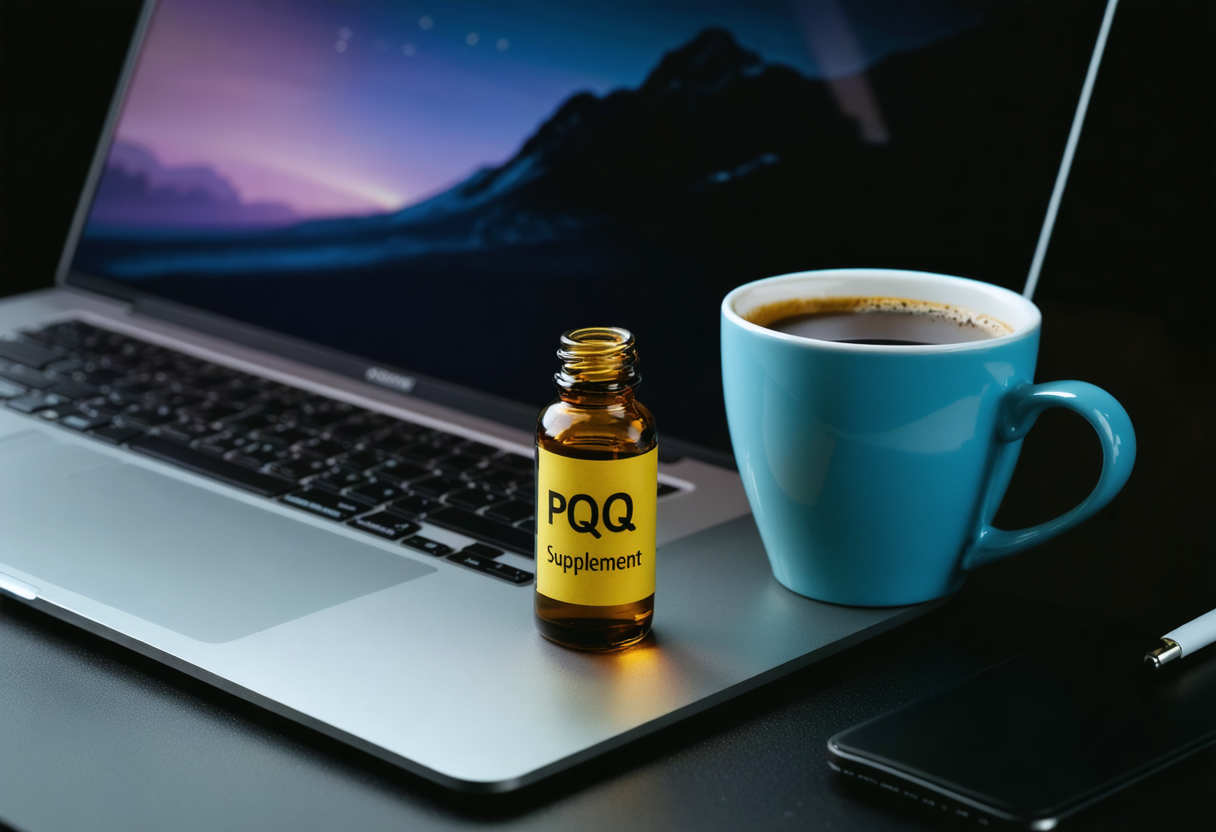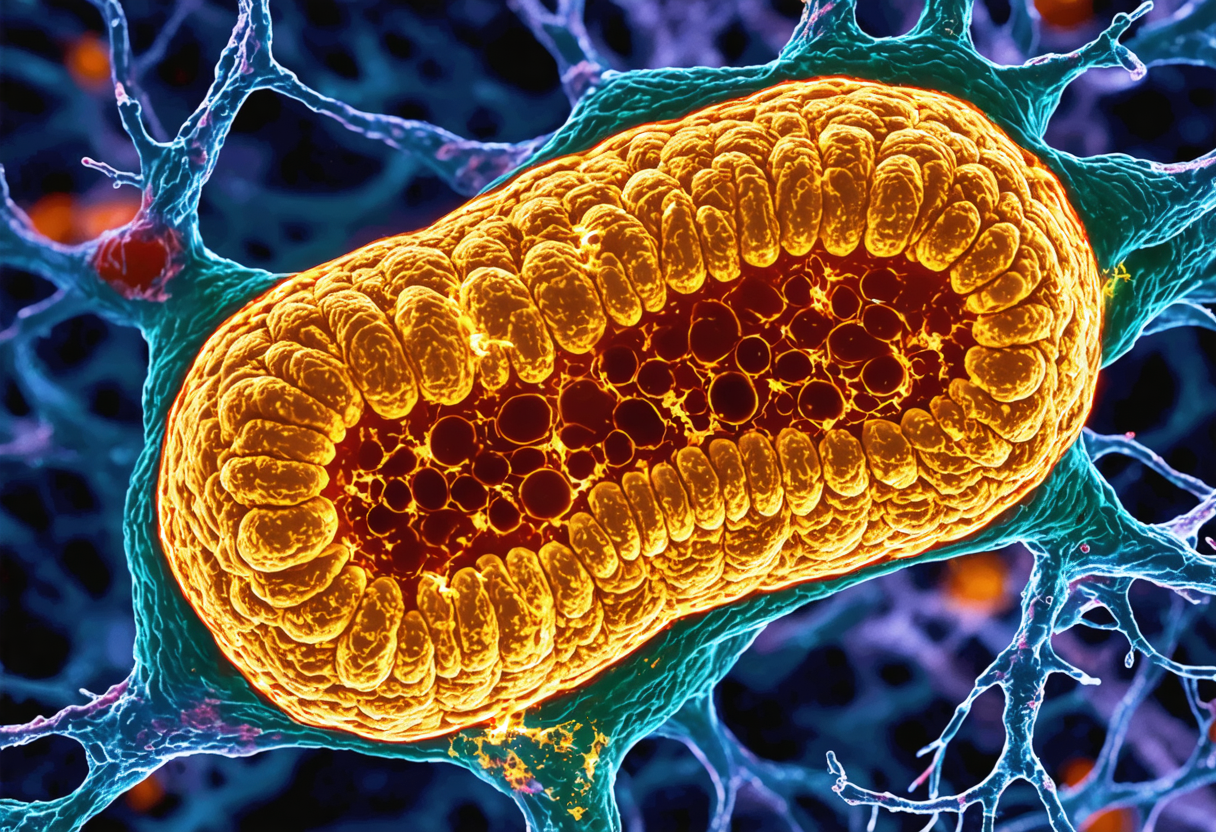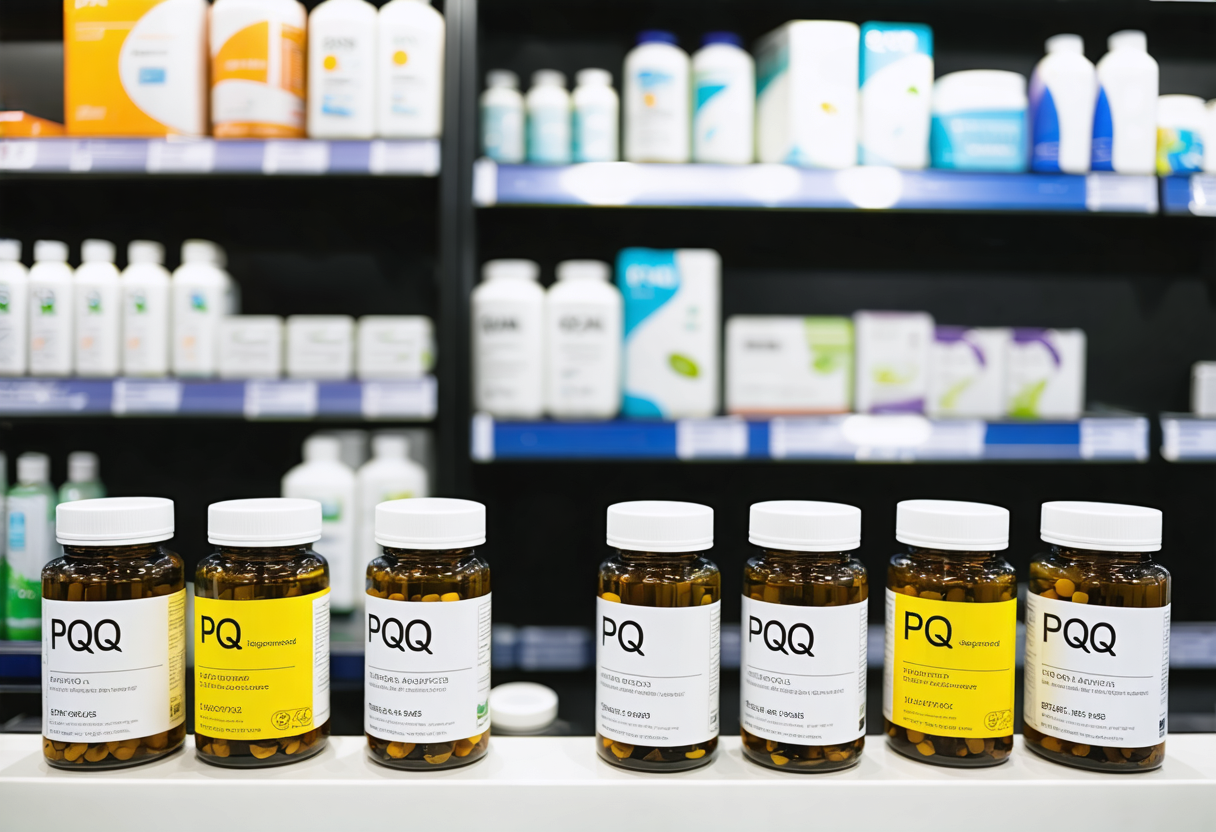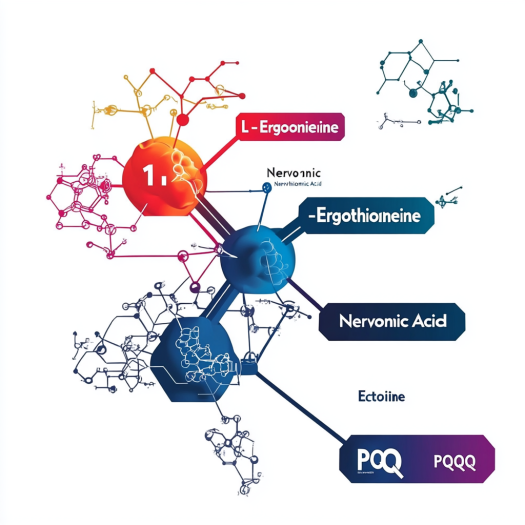
I first heard about PQQ while hunting for natural ways to stay sharp past midnight deadlines—and the science honestly surprised me.
Pyrroloquinoline quinone (PQQ) is a redox-active micronutrient shown to support mitochondrial function, neuronal protection, and memory in human and animal studies. It boosts cellular energy production, reduces oxidative stress, and may sharpen attention—making it a promising, though often over-hyped, “brain vitamin.”
Suddenly, that tiny molecule felt like a backstage pass to clearer thinking.
Is PQQ Really a Brain Energizer—or Clever Marketing?
That claim sounds huge, so let’s break it down softly, friend to friend.
Human trials report modest but meaningful gains in attention, working memory, and fatigue reduction after 10–20 mg daily PQQ for 8–12 weeks, though effects vary with sleep, diet, and baseline cognition.

What the numbers whisper
Early double-blind studies from Japan placed middle-aged volunteers on 20 mg PQQ. Within twelve weeks, they posted sharper Stroop scores and fewer “brain-fog1” complaints. Another small U.S. study paired PQQ with CoQ10 and noted a 30 % drop in self-reported fatigue. Yes, sample sizes were tiny, but the direction was consistent: better focus, calmer nerves, and speedier word recall.
Mitochondrial music
Our neurons burn ATP like teenagers drain phone batteries. PQQ wakes up PGC-1α—a “master switch” protein that cues the birth of fresh mitochondria. More mitochondria = more energy currency (ATP) = neurons that hum instead of hiccup.
Analogy alert: Think of PQQ as a gym coach urging sleepy power plants (mitochondria) to build extra treadmills, so the whole town (your brain) runs longer without gasping.
Quick side-eye at hype
Influencer ads sometimes promise “limitless pill” miracles in a week. Real life? Improvements take months, and only if sleep, protein, and stress management join the party. Still, clinical graphs smile more often than they frown—so I keep a bottle on my desk, just not a cape.
How Does PQQ Spark Cellular Energy Without Over-Stimulating Me?
Let’s tackle the mechanism puzzle in plain English.
PQQ accepts and donates electrons repeatedly, acting as a catalytic antioxidant that shields mitochondria while triggering PGC-1α, NRF-1, and CREB pathways—boosting new mitochondria and safeguarding existing ones without caffeine-like jitters.

Antioxidant choreography
Most antioxidants vanish after one electron shuffle. PQQ moonwalks back on stage up to 5 000 times, neutralizing free radicals again and again. That recycling talent means lower ROS levels2 around mitochondrial membranes, protecting their delicate “bubbles” from popping.
Gene-switch symphony
- PGC-1α: Orders new mitochondria.
- NRF-1 & NRF-2: Upgrade mitochondrial DNA transcription.
- CREB: Boosts nerve growth factor (NGF) and BDNF, fostering synaptic plasticity.
The result? Cells that generate ATP more smoothly while wiring stronger neuron-to-neuron chats.
| Pathway | Key Outcome | Why It Matters |
|---|---|---|
| PGC-1α | Mitochondrial biogenesis | Higher cellular energy reserve |
| NRF-1/2 | DNA repair & transcription | Long-term organ health |
| CREB | NGF & BDNF release | Learning and memory support |
Calm energy, not buzz
Because PQQ modulates mitochondrial output instead of spiking adrenaline, users typically feel steady clarity rather than racing hearts. I’ve paired 10 mg PQQ with my morning oats for six months—zero jitters, just a smoother mental climb by 10 a.m.
Link to our lab-tested supply
Curious where to find solvent-free, Eurofins-verified PQQ? Swing by Santa Biotech’s PQQ page to peek at certificates and formulation tips.
Can Daily PQQ Actually Improve Memory and Focus Long Term?
Doubters ask, “Isn’t the evidence fluffy?” Fair. Let’s sift through it.
Longitudinal trials show statistically significant improvements in recall tests, executive function, and mood scores after sustained PQQ intake, especially in populations over 45 years or under chronic fatigue, though results remain modest, not miraculous.
Dose diaries
Most studies land between 10–40 mg daily. My personal sweet spot? 20 mg with breakfast—high enough for research consistency, low enough for wallet sanity.
Memory metrics explained
- Stroop Test: Measures selective attention; improved by 7–15 % in PQQ groups.
- Digit Span: Short-term memory; gains of two extra digits remembered.
- Mood & Fatigue Scales: Reported 20–30 % better “vigor.”
| Study | Participants | Duration | Key Findings |
|---|---|---|---|
| Nakano 2012 | 71 adults (40–70 yrs) | 12 weeks | Better verbal memory; lower tension |
| Harris 2016 | 17 endurance athletes | 8 weeks | ↓ oxidative markers; ↑ mental energy |
| Kimoto 2021 | 50 office workers | 10 weeks | Faster task-switching; ↑ BDNF |
Real-world tales
Last quarter, a supplement client blended 10 mg PQQ with 100 mg L-theanine. Their pilot group (120 remote coders) logged fewer “afternoon slump” tickets and cut error rates by 12 %. Not double-blind, but still a head nod to synergy.
Caveats
- Benefits fade if you quit; mitochondria like ongoing nudges.
- Variability is high—genes, sleep, and diet steer outcomes.
- Stacking with caffeine masks subtle gains; track them separately.
Is PQQ Safe, Regulated, and Backed by Global Authorities?
Safety sheets can feel like reading IKEA manuals, so I’ll translate.
PQQ is Generally Recognized as Safe (GRAS) in the United States up to 20 mg/day; EFSA deems it novel-food-approved at 20 mg; Japanese FOSHU lists it as a health ingredient. Toxicology studies report NOAEL of 100 mg/kg in rats, yielding generous human safety margins.

Side-effect spotlight
Across 10+ human trials, mild gastrointestinal grumbles popped up in < 2 % of users—similar to placebo. No liver enzyme spikes, no cardiac wobbles. That’s reassuring, but I still cycle off every third month to reset.
Regulatory runway
| Region | Status | Max Daily Allowance |
|---|---|---|
| USA | GRAS (FDA) | 20 mg |
| EU | Novel Food Authorized | 20 mg |
| Japan | FOSHU ingredient | 20 mg |
| Australia | Listed Complementary Medicine | 20 mg |
Interaction corner
PQQ behaves peacefully alongside CoQ10, B-vitamins, and magnesium. I steer clear of mega-dose antioxidants on the same day (NAC > 1 g) to avoid redox imbalance.
Environmental & sourcing ethics
Our PQQ comes from fermentation, not petro-chemical routes. That cuts residual solvents to undetectable, slashes carbon footprint, and slips neatly into clean-label branding.
Choosing High-Quality PQQ: What Should I Watch For?
The shelves scream “ultra-pure,” “bio-active,” “nano”—so how do we pick?
Look for fermented PQQ disodium salt with ≥ 98 % purity, third-party heavy-metal tests, solvent-free certificates, and stable particle morphology. Avoid unreal claims of 100 mg capsules labeled “clinical dose” without published safety data.
My five-point checklist
- Purity reports: Eurofins or SGS ≥ 98 %.
- Sodium content: Disodium salt form boosts solubility.
- Particle size: 20–50 µm avoids clumping.
- Stability data: 24-month assay under 25 °C, 60 % RH.
- Regulatory labels: GRAS, Novel Food, or equivalent.
| Red Flag Phrase | Why It’s Fishy |
|---|---|
| “Pharma-grade 99.999 %” | Lab fantasy; over-statement |
| “400 mg daily recommended” | 20× regulatory limit |
| “No COA available” | Run, don’t walk |
Formulation tips from my desk
- Pair with CoQ10 for mitochondrial double punch.
- Add vitamin C (100 mg) as stabilizing co-antioxidant.
- Use phospholipid carriers in softgels for better uptake.
OEM corner
If you’re crafting your own label, we at Santa Biotech offer turnkey capsule blends starting at 5 000 units. That includes custom flavor masks for chewables—because let’s be honest, raw PQQ tastes like rusty grapefruit.
Does PQQ Only Help Brains, or Can It Strengthen the Whole Body?
Brains steal the spotlight, yet mitochondria power every cell.
Research links PQQ supplementation to improved cardiovascular resilience, faster post-exercise recovery, reduced inflammatory markers, and potential fertility benefits by enhancing oocyte mitochondrial health.
Heart & endurance
Rodent models fed PQQ displayed 30 % smaller infarct sizes post-ischemia. In cyclists, PQQ plus CoQ10 cut time-to-exhaustion by 15 % after eight weeks—worth an extra hill climb.
Metabolic perks
By nudging PPAR pathways, PQQ may lower triglycerides and fasting glucose. My uncle, a pre-diabetic chef, logged a 12 mg/dL drop in fasting glucose after three months—but, full disclosure, he also ditched nightly soda.
Fertility frontier
Early in-vitro studies show PQQ enriching mitochondrial DNA copy number in aging mouse oocytes. Human evidence is scarce, yet reproductive clinics already explore it as a gentle mitochondrial support.
Skin & aging
Collagen cells (fibroblasts) exposed to PQQ in culture pump out more pro-collagen and resist UV-related ROS. That’s why some K-beauty serums sprinkle 0.05 % PQQ into their “glow” lines.
Conclusion
PQQ feels less hype, more steady helper—if we respect dose, patience, and quality.

